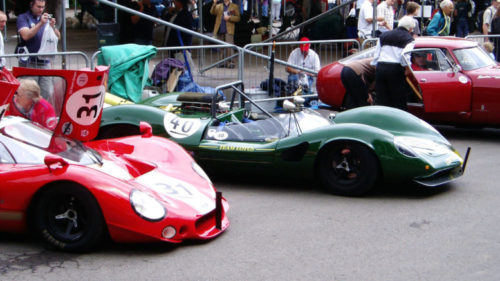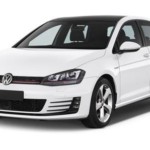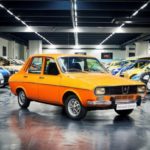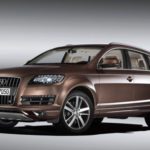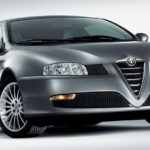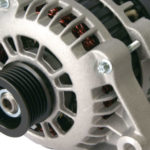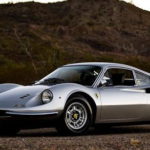Auto Racing
Race history
Car racing, ie. Auto racing (also known as car racing, i.e. car racing or car racing) is a motor sport that involves car racing for competitions. It is one of the most common and watched television sports in the world.
Start of car racing
The first car races emerged shortly after the construction of the first successful gasoline-powered cars. The first race was organized on April 28, 1887 by the editor-in-chief of Paris-based Le Vélocipède, Monsieur Fossier. The race was two kilometers from Neuilly Bridge to Bois de Boulogne in Paris. He defeated Georges Bouton of the De Dion-Bouton Company in a car he constructed with Count Jules Albert de Dion, but as he was the only competitor to appear in the race, it is quite difficult to call the event a race.
On July 23, 1894, the Paris-based Le Petit Journal organized what was considered to be the world's first automobile competition, i. the first car race between Paris and Rouen. Sports competitions were tried and tested by the general public with an increase in newspaper circulation. Mr. Pierre Giffard, editor of the newspaper, promoted the race as a "Competition for Horseless Carriages (Concours des Voitures sans Chevaux) which is not dangerous, easy to drive and cheap to travel." A total of 102 registered competitors paid for a ticket of 10 francs as a ticket to the race. A total of 69 vehicles have started the 50 km long test race which will show which participants will qualify for the start of the main event, the 127 km long Paris - Rouen race. The participants in the competition ranged from serious manufacturers such as Peugeot, Panhard or De Dion to amateur vehicle owners, with only 25 selected for the main race. The race started from Porte Maillot and went through the Bois de Boulogne. Count Jules Albert de Dion arrived first in Rouen after 6 hours and 48 minutes of driving at an average speed of 19 km / h. He finished 3 minutes and 30 seconds ahead of Georges Lemaître (Peugeot), Doriot (Peugeot) with 16 min 30 sec behind, René Panhard (Panhard) with 33 min 30 sec behind and Émile Levassor (Panhard) with a lag of 55 min 30 sec. The official winners of the car are Peugeot and Panhard, judged for their speed, handling and safety, while De Dion's steam car was disqualified for using a forbidden steering wheel.
Early (first) car races
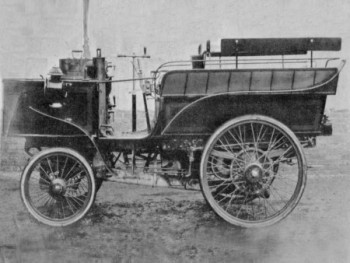
The Paris-Bordeaux-Paris race, held in June 1895, is considered the "first real motorcycle race". The first to cross the finish line was the Émile Levassor in his 1205 cc Panhard-Levassor model. He covered a total of 1.178 kilometers in 48 hours and 47 minutes, finishing almost six hours before the second-placed competitor. However, the official winner was Paul Koechlin in Peugeot, because it was determined that Levassor violated the rules of the race.
Only nine of the 22 starters completed this race. Thanksgiving Day The Chicago Times-Herald race, generally held on November 28, 1895, is generally considered the first automobile race in the United States. Press coverage of the event has aroused great interest from Americans in cars. The 87,48-km race ran from the south side of town, north along the lake in Evanston, Illinois and back again. Contestant Frank Duryea won the race by 10 hours and 23 minutes, beating the other five competitors.
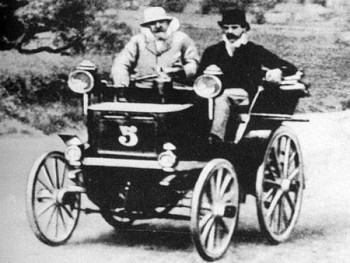
The first regular car competition was in Nice, France, launched in late March 1897 as "Speed Week". To fill the competition schedule, most of the current types of racing events were invented here, including the first so-called. Hill climb (Nice - La Turbie) and a sprint race which, in fact, was the first so-called. Drag race. The first competition in international competition between nations and states, not between individuals, began with the Gordon Bennett Cup in car racing. Parisian artist Ernest Montaut and his wife Marguerite have faithfully documented the rapid change of face of motorized traffic in Europe. They made a large number of posters and graphics published by the publisher Mabileau et Cie, which cover racing events that include motor vehicles, airplanes, airships and speedboats. These images have made a valuable contribution to the history of car traffic, especially in its racing aspect
City-to-city racing
As the French dominated car manufacturing and car racing at the time, the French Automobile Club ACF organized a series of major international competitions, usually from or to Paris, connecting other major cities in France or cities in Europe. The first very successful European races ended in 1903, when Marcel Renault was involved in a tragic accident near Angoulême in the Paris - Madrid race. Nine victims of the crash caused the French government to interrupt this race in Bordeaux and ban auto racing on open (public) roads.
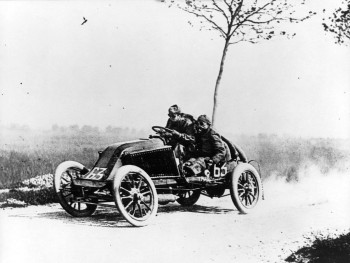
In 1907, the Paris - Beijing race covered 14.910 kilometers of some of the most inhospitable areas and terrains on Earth. Five vehicles took part in the race, which was won by the Italian prince Scipione Borghese in a 7.433cc 45-liter Itala car. The longest car race in history with a goal in Paris was held in 1908 under the name New York to Paris Race. Six teams from France, Italy, Germany and the United States competed in the race, but only three teams made it to Paris. He won the American Thomas Flyer car driven by George Schuster, traversing the epic 35.200 miles of the race in 169 days.
The first dedicated racing circuits
The Milwaukee Mile Trail (USA) is the oldest race track in the world with races held there since 1903. It was not originally made for auto racing, but started as a one-mile (1,6 km) horse race track back in XIX century. From 1903 to 1914, there was a so-called One-mile dirt oval track on Brunots Island south of Pittsburgh on the Ohio River. Louis Chevrolet won the AAA Car Championship in 1905. On September 10, 1907, Rex Reinersten was fatally shot on this track. In 1916, Chevrolet won the first Universal Films Trophy race on the 2,88-mile Uniontown Speedway Board track south of Pittsburgh in Hopwood, Pennsylvania.
The Brooklands Trail in Surrey, England, is the first purpose-built motorcycle race track to open in June 1907. It consists of a 4,43-km long concrete runway with fast sloping curves. Brooklands was also the seat of the aviation industry in England when the Vickers Company opened a factory and an airport during World War I. The race track was closed in 1939, when production of warplanes began. The damage done to the track during World War II meant that the track was never repaired and open to racing.
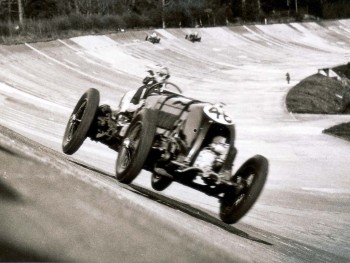
Racing competitions gradually spread to other parts of the British Empire. The first competition in India was held in 1905 by the Motor Union of Western India. It was a race from Delhi to Mumbai at a distance of 1.300 km in an attempt to expose India to motorists while testing the ability of cars in unusual driving conditions. The Vice-Governor of India, Lord Curzon, has given his consent to the event.
Period 1910 - 1950
The 1930s saw the transformation of competition vehicles from expensive road cars into pure racing cars with Alfa Romeo, Auto Union, Bugatti, Delage, Delahaye and Mercedes-Benz construction vehicles and engines producing 605 hp with the help of a multiple supercharging system. From 1928 to 1930 and again from 1934 to 1936, the maximum permissible car weight was 750 kg, a rule diametrically contrary to the then applicable racing regulations. Extensive use of aluminum alloys was used to create light weight, and in the case of Auto Union and Mercedes, the paint was removed from the vehicle to meet the weight limit so that the then famous Silver Arrows race cars were created.
The American NASCAR races were founded by William France Sr. February 21, 1948 with the help of several other drivers from that time. The first NASCAR "Strictly Stock" race ever was held on June 19, 1949 at Charlotte Speedway. The so-called Strictly Stock division competition was put on hold until American carmakers failed to produce family limousines fast enough to keep up with the demand for cars after World War II.
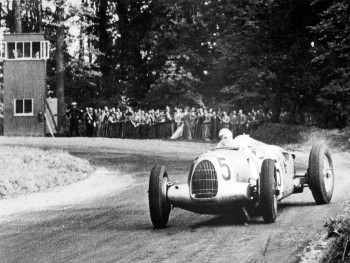
The period from 1950 to the present
After the Second World War, sports car racing appeared as a special form of racing in relation to classic racing, and since 1953, the International Automobile Federation, FIA, has been organizing the FIA World Championship. The NASCAR Strictly Stock Division was renamed the Grand National Division in the early 1950 season. For a period of more than a decade, modifications were allowed in the field of safety and performance, and since the mid-1960s, vehicles have been purpose-built as race cars with a sports-modified body. The first NASCAR competition held outside the United States was in Canada, where on July 1, 1952, Buddy Shuman won a 200-lap race on a half-mile (800 m) dirt track in Stamford Park, Ontario, near Niagara Falls.
Since 1962, sports cars have temporarily given way to GT cars with the FIA's decision to replace the World Championship for Sports Cars with the International Championship for GT Manufacturers. During the 1960s while there were so called Superspeedways models, old dirt tracks were quickly paved (paved) so that the number of races on them was markedly reduced.
A class of powerful and powerful cars emerged between 1950 and 1960 on both sides of the Atlantic using European chassis and large American engines from early Allard cars through modified models such as the Lotus 19s equipped with a large AC Cobra engine. The combination of mostly British chassis and American V8 engines gave rise to the organization of the so-called Can-Am series races in the period 1960-1970.
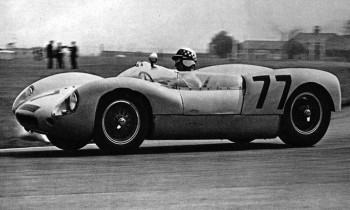
The so-called Club Mans cars provided a lot of fun in racing from the 1960s to the 1990s, and John Webb revived interest in large sports prototypes with Thundersports racing in the 1980s. Vehicles from the Group 4 Grand Touring Cars and Group 5 Special Production Cars class have been the main participants in the Sports car racing competition since 1976, while prototypes will find themselves in general decline except for the dominance of Porsche 936 in Le Mans and two-liter prototypes. volumes from the so-called Group 6 in a series of smaller races. The last NASCAR race on the dirt track was held on September 30, 1970 at the State Fairgrounds Speedway half a mile in Raleigh, North Carolina. From 1972 to 2003, NASCAR’s main race series was called the Winston Cup Series sponsored by the RJ Reynolds Tobacco Company brand, Winston Cigarettes. The changes that resulted in the participation of RJR as well as the reduction of the number of races from 48 to 31 races per year brought in 1972 the beginning of the "modern age" of NASCAR races.
In Europe, the FIA adopts virtually unchanged ACO GTP rules and sanctions Group C vehicles in the World Endurance Championship, including high-tech closed race prototypes. In the US, the IMSA Camel GTP Series supports close competition between a large number of automaker teams and private crews with vehicles technically similar to those of Group C, but with sliding weight and engine displacement scales used in an attempt to limit performance. The FIA tried to move cars from Group C into a virtual Grand Prix two-seater format in the early 1990s with rules for engines and short race times taken from Formula One racing. Since 1, the IMSA GT Championship has been based on prototypes with less emphasis on serial cars. The Australian Production Car Championship first appeared in 1983 with the inaugural champion determined by the results of two races that took place at Winton Motor Raceway in Victoria on September 1987 of the same year. The first World Touring Car Championship to open for Touring Cars Group A was held in 27 at the same time as the long-running European Touring Car Championship (ETCC). Additional car races were held outside Europe in Bathurst, Australia, on the Calder Park Raceway in Australia (using simultaneously public roads and the newly built Thunderdome runway), Wellington in New Zealand and Mount Fuji in Japan. The driver's championship was won by Roberto Ravaglia in the BMV M1987, while the team winner was the Eggenberger Texaco Ford No 3 with the Ford Sierra.
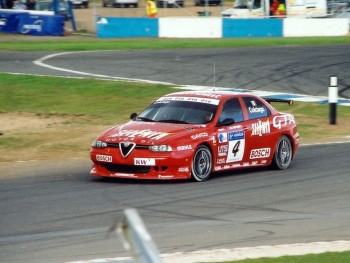
The Winston Cup Series competition experienced a huge boom in popularity in the 1990s. That coincided with the decline in the popularity of racing in the American Championship Car Racing Series. FISA has decided to split the cars into three classes: Group N (production cars), Group A (modified production cars) and Group B (modified sports cars). Group B was introduced by the FIA to compete in 1982 as a replacement for both remaining car groups, Group 4 (modified GT cars) and Group 5 (racing prototypes).
The IMSA GT Series races have grown into the American Le Mans Series, which began its first season in 1999. These races are closely linked to those of the Le Mans Series because both competitions feature prototypes and GT cars. The SCCA World Challenge consists of a one-hour race combining three vehicle classes: GT (Chevrolet Corvette, Aston Martin DB9, etc.), GTS (Aqura TSX, BMW Series 3, etc.) and Touring Cars (class similar to the Grand Am Continental Challenge). . The NASCAR competition became more dominant and the Indy Car Series races separated from the CART competition in 1996, placing greater emphasis on oval tracks with the participation of domestic open race cars.
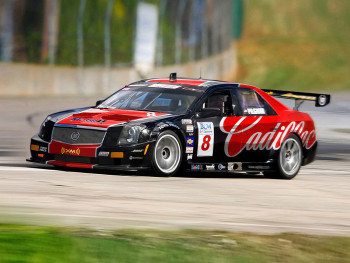
Race categories
Formula racing
The most famous version of single-seater car racing, the so-called One-seaters are Formula One (Formula 1, F1) races that have the annual World Championship for drivers and constructors. In single-seater wheels, the wheels are not open-wheeled, and vehicles often have aerodynamic wings front and rear to produce so-called. Downforce (thrust force) to improve track grip.
In Europe and Asia, the races of such cars are usually called abbreviated "Formula" with the appropriate hierarchical extensions. In North America, the term "Formula" is not officially accepted with the exception of F1 races. This sport is usually organized to follow the "international" race format (such as F1), the "regional" format (such as Formula 3 Euro Series) or the "domestic" in a certain form (such as the German Formula 3 Championship or Britsh Formula Ford).

The other big international one-seat racing series is the GP2 Series (formerly known as Formula 3000 and Formula Two). In North America, cars used in the National Championship (currently IndyCar Series, formerly CART) are traditionally similar, though less sophisticated, than F1 vehicles with more technology constraints to control costs.
Regional series include Formula Nippon and Formula V6 Asia (especially in Asia), Formula Renault 3.5 (also known as the World Series by Renault, a successful series created by the World Series by Nissan), Formula Three, Formula Palmer Audi and Formula Atlantic. In 2009, the FIA Formula Two Championship brought the F2 series to life. Domestic or specific country series include Formula Three, Formula Renault, Formula Ford with the introductory (basic) Formula BMW series. One-seat racing is not limited to professional teams and drivers. There is a large group of small amateur racing teams for those who want to compete against similar teams and drivers around the world. In the UK, the main racing series for amateur teams are the Monoposto Racing Club, BRSCC F3 (formerly Club F3 or ARP F3), Formula Vee and Formula Ford Club. Each series seeks sponsors in the market who should first and foremost provide a low cost of competition, while the second goal is to gain a unique experience using the same regulations as some professional series (eg BRSCC F3).
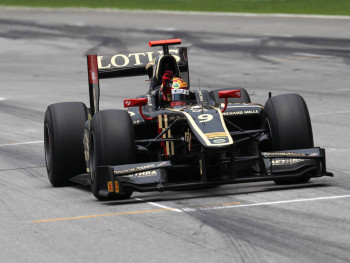
There are other categories in single-seat racing, including kart racing where small, inexpensive small and short track machines participate. Many of the current top drivers have started their karting careers. The Ford formula has long been a popular basic (initial) one-seat category for advanced karting drivers. Now this is a BMW Formula which is a better option as it has introduced an aero package and slick (smooth) tires allowing younger drivers to gain racing experience with dynamics closer to F1 racing. The Star Mazda Series is another starter series for young drivers. Students from colleges and universities can participate in one-seat racing through the Formula SAE competition, which involves designing and building a unique one-seat in a multidisciplinary team and racing with it in competitions. This also develops other required skills such as teamwork promoting motorsport and engineering.
In 2006, producer Todd Baker was responsible for creating the world's first female Formula One team. The team consisted of women drivers from different racing disciplines, and was formed for the MTV Reality Show, which took place on the Mazda Raceway Laguna Seca.
In December 2005, the FIA approved the Superleague Formula races, which were first held in 2008. Here, the racing teams are owned by prominent sports football clubs such as. AC Milan and Liverpool FC
After 25 years away from the sport, former Formula 2 champion Jonathan Palmer has relaunched the F2 series with drivers who have largely completed the Formula Palmer Audi series. The category is officially registered as the FIA Formula Two Championship. This weekend-long competition consists of two races and is an introductory competition before the FIA World Touring Car Championship races.
Touring car racing
Touring (passenger) car races are allowed to participate in converted passenger cars in race cars. This often results in a lot of contact in the race due to the small difference in speed and the large number of competitors. Major Touring Car Championships held around the world are the V8 Supercars (Australia), the British Touring Car Championship, the Deutsche Tourenwagen Masters (DTM) and the World Touring Car Championship (WTCC).
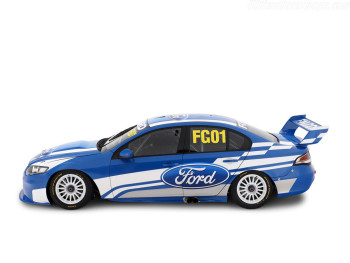
The European Touring Car Cup is a one-day event open to the Super 2000 specification of cars from many national championships across Europe. The Sports Car Club of America, the SPEED World Challenge Touring Car and the GT Championship are dominant in North America. The American Historic Trans-Am Series is undergoing a transition period, but it is still the longest running racing competition in the United States. The American National Auto Sport Association also provides a place for amateurs to compete in so-called home-built factory remodeled cars on various local tracks.
Sports car racing
Sports car racing features production-derived versions of sports cars known as Grand tourers (GTs) and purpose-built sports prototypes that compete in their indoor track classes. The biggest global championship of these GT car racing series is the FIA GT1 World Championship.
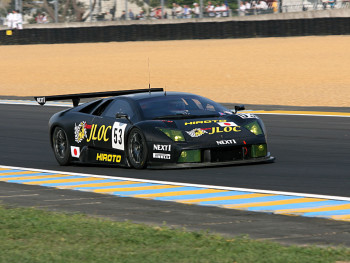
There is also the FIA GT3 European Championship as well as the lesser known GT4 European Cup. Previously, there was also the FIA GT2 European Championship, but was abolished by the FIA to reduce growing costs. Other major GT championships include the Japanese Super GT and the International GT Open for GT2 and GT3 cars. There are also national GT championships involving mostly GT3 and GT4 cars with professional and amateur drivers. Sports prototypes, unlike GT cars, do not rely on passenger cars as a base for development. They have closed (covered) wheels and an often enclosed cockpit (cabin) as they are often intended for endurance racing. The vehicles have much less weight and more power than GT cars, which makes them extremely fast. These prototypes compete in the 24 Hours of Le Mans, Europe Le Mans Series, Asian Le Mans Series and American Le Mans Series. These cars are called LMP (Le Mans prototype) cars with the LMP1 designation worn by the manufacturer's prototypes and the slightly less powerful LMP2 car most used by private teams. All three Le Mans series also feature GT cars in addition to Le Mans prototypes, and these cars have different limitations over FIA GT cars.
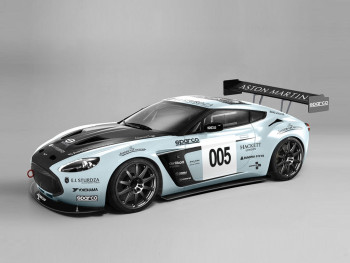
These races are often driven at great distances of at least 1.000 km, with cars being driven by teams of two or more riders who change every few hours of driving. Due to the differences in performance between production versions of sports cars and purpose-built sports prototypes, one race usually contains several different racing classes where each is fighting for its own championship. Another prototype and GT Championship exists in the US and began in 2000. It is a Grand-Am that has split from its parent Rolex Sports Car Series and features slower, cheaper race cars than LMP and FIA GT cars. Famous sports car races include 24 Hours of Le Mans, Rolex 24 at Daytona, 24 Hours of Spa-Franchorchamps, 12 Hours of Sebring and Petit Le Mans on the Atlanta Road. There is also the famous 24 Hours of the Nürburgring on the infamous Nordschleife track and the new Dubai 24 Hour race featuring GT3s and inferior cars with a mix of professional and pro-am drivers.
Production Car Racing
(Production-car racing)
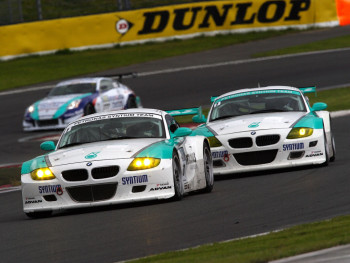
Races of production (serial) cars, otherwise known as "showroom stock" are held in the USA. These are economical and rule-limited versions of passenger car racing and are mainly used to limit costs. Numerous manufacturers of serial cars by categories based on certain car brands are participating. Most series use Group N vehicle rules with a few exceptions.
There are several different series that ride around the world, most notably the Japanese Super Taikyu and the IMSA Firehawk Series, which ran from 1980 to 1990 across the United States.
One-make racing
The so-called One-make races are often used by production cars of one of the well-known manufacturers or only one model in the range of models of one manufacturer. There are numerous significant races of single brand formulas from different countries and regions, some of which, such as Porsche Supercup and IROC, have encouraged the establishment of many national championships. These racing series are often driven at the club level by production cars with limited modifications and limited performance to keep all participants equal.
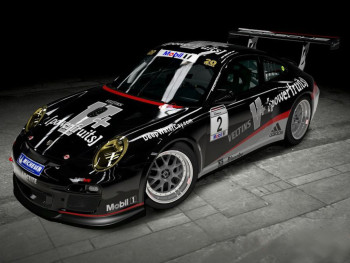
Some of the more famous racing series are European Radical European Masters, John Cooper MiniChallenge and Clio Cup, and those with a modest budget are Ginettas, Caterhams, BMW and MX5. There are also one-seat racing with Formula chassis such as the Renault Formula and the BMW Formula, which are usually the initial (basic) series for later transition to the more famous series and formula races.
Stock Car Racing
In North America, the so-called Stock Car racing is the most popular form of car racing. Primarily designed to compete on oval tracks, these cars vaguely resemble factory vehicles, but are actually purpose-built race cars that are made to strict specifications called Silhouette Racing cars rules. The largest stock car racing governing body is NASCAR (National Association for Stock Car Auto Racing). NASCAR's main series is the Sprint Cup Series and its most famous races are the Daytona 500, Southern 500, Coca-Cola 600 and Brickyard 400.
NASCAR also runs several initial (entry) series including the Nationwide Series and the Camping World Truck Series (pickup truck races). The races of this series are run throughout the continental United States. The NASCAR Canadian Tire Series race is organized across Canada, while the NASCAR Corona Series races are run in Mexico. NASCAR is also organizing several smaller regional series such as the Whelen Modified Tour. A modified car can best be described as an open-wheel car. Modified cars do not have parts related to the so-called. "Stock" vehicle after which they are named. Many modified cars are recognizable by the name of the so-called. "Manufacturer" and through the logo of the so-called. "Vehicle names" because they use components manufactured by another car manufacturer. There are other organizational bodies of the stock car competition, such as the Automobile Racing Club of America and the United Speed Alliance Racing.

In the UK, the British Stock Car racing competition is also called "Short Circuit Racing". It takes place on a slate or asphalt track usually about 1/4 mile (about 400 meters) long. This competition is organized and led by the Oval Racing Council (ORC) and BriSCA. Both bodies consist of individual promoters of the competition. There are around 35 tracks in the UK with more than 7000 active drivers. The competition is divided into three basic "divisions" with special rules on auto-contact during the race. The most famous championship is BriSCA F1 Stock Cars. Vehicles, so-called The Full Contact Formula includes Bangers, Bombers and Rookie Bangers vehicles, and the races are called Demolitions Derbies, Figure of Eight racing and Oval Racing. Semi Contact Formula vehicles include BriSCA F1, F2 and Superstox models where bumpers are used tactically during the race. Non-Contact Formula vehicles include National Hot Rods, Stock Rods and Lightning Rods. UK Stock Car Racing competitions began in 1950 and suddenly became popular through the 1960s and 1970s.
Reliable Rallying
Reliable racing at the international level and in most national championships involves two classes of certified (homologized) cars from series production: Group N series cars and modified Group A cars.
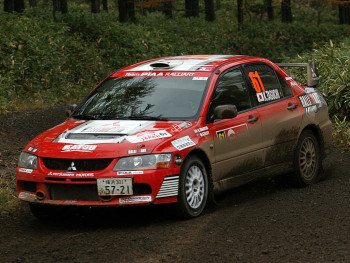
The cars compete on closed public roads or off-road areas where they drive on so called. point-to-point format. Drivers and their co-drivers collect (rally) groups of points, winning them at regular intervals from the start of the competition. Relay usually lasts during several stages of special exams on any terrain where participants are allowed to cross the stage at reduced speed before the start of the competition, recording shorthandly detailed descriptions of the sections of the track or route on which they are traveling. These detailed descriptions are known as the so-called. pace notes. During the actual rally, the front passenger reads aloud to the driver the track notes using the intercom system in the protective helmet, allowing each section to be completed as quickly as possible. Scoring is based on the shortest total elapsed time during special exams including possible penalties. The main World Rally Series is the World Rally Championship (WRC). There are many regional championships and that is why many countries have their national rally championship. Some of the most famous rally competitions are the Monte Carlo Rally, Rally Argentina, Rally Finland and Rally GB.
Another famous event which is, in fact, the so-called "Rally Raid" competition is a unique Paris - Dakar Rally. There are also many smaller club-level rally competitions that are popular with amateurs and that form the true "roots" of this motorsport. Cars at this level of competition are not fully prepared in accordance with the requirements of homologation of Group A or Group N cars. Other major rally events include the British Rally Championship, the Intercontinental Rally Challenge (IRC), the African Rally Championship, the Asia-Pacific Rally Championship and long distance rally competitions similar to the Dakar Rally.
The Targa Tasmania Reliance, held in the Australian State of Tasmania and launched in 1992, took its name from the famous Targa Florio car race, a former car show held on the island of Sicily. The competition concept of targa rally is directly derived from the best features of the Mille Miglia, Coupe des Alpes and Tour de Corse. Similarly named events worldwide include Targa Newfoundland competitions in Canada, Targa West in Western Australia, Targa New Zealand and other smaller targa events.
Drag racing
In the so-called For racing, the goal is to finish the given distance in a straight line from a standing start in front of another vehicle in the parallel lane. This distance is traditionally ¼ miles (400 meters) long, although na miles (200 m) races have become popular since 1990. Vehicles may or may not give a start signal at the same time depending on the race class. The competing vehicles consist of models ranging from everyday production cars to purpose-built vehicles. dragster. Speeds and times achieved vary from class to class. Average serial cars travel ¼ miles in 12 to 16 seconds, while in so-called. The top fuel dragster class takes 4,5 seconds or less to reach a speed of 530 km / h. Drag Racing was organized as a sport by Wally Parks in the early 1950s through the NHRA (National Hot Rod Association). The NHRA was formed to discourage participation in so-called Street racing. When starting, the top fuel dragster will accelerate by 3,4G, and when the brake parachutes open, it decelerates to 4G, which is higher than the Space Shuttle aircraft. A top fuel car can be heard over a distance of over 13 km and can generate a smaller earthquake of 1,5 to 3,9 degrees Richter scale!
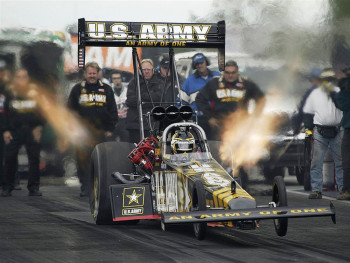
Drag race is driven by two cars parallel to each other, while the winner continues to the next round of the competition. Professional drivers drive from start to finish across the finish line. The fair driver in the race is handicapped (when the worse car achieves the so-called head start) when he uses the index light to start (the lowest light on the side pillar is allowed to start), so that vehicle allegedly started prematurely (its index on the pole is "break" out ”) and lost the duel. The pole with the beams of the index lights for the race is marked as the main cause of the loss of public interest in drag racing. Ordinary people don’t understand why a slower car wins or why someone needs to apply the brakes to avoid speeding. Many local track owners have also complained that dragster teams are exiting the competition because they want to spend as little time on the track as possible by bringing their own food, drinks, fuel and supplies, making dragster track owners increasingly difficult to make money on these events. This causes an increase in prices and costs with the loss of public interest in such events.
Off-road racing
In off-road racing, various types of specially modified vehicles, including cars, compete in off-road emergency conditions.
In North America, these races are often held in the wilderness such as the famous Baja 1000 race. In Europe, off-road racing refers to events such as autocross or rallycross competitions, while desert races and rally-raid competitions such as Paris - The Dakar, Master Rallye or European Bay Races are called Cross-Country Rally.
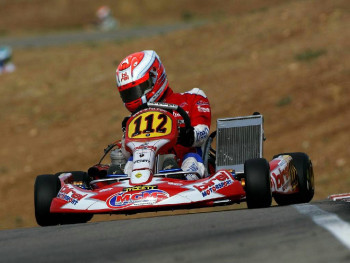
Historical racing
As modern car racing is based on modern technology with a lot of corporate sponsors and policies involved, historic car racing tends to be the opposite. Because they are based on vehicles from a particular era of car development, racing is more oriented towards the participation of collectors and people who are hobby cars while reducing corporate sponsorship and eliminating competition. The competitions are so regulated that only cars of a certain age (certain era) are allowed to participate. Modern equipment used in the race is about safety and timing. This event can contain a number of different disciplines in motorsport.
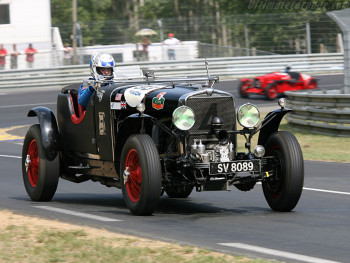
Some of the most famous events in this competition are the Goodwood Festival of Speed and Goodwood Revival in England and Monterey Historic in the USA. The championship ranges from the "roots of the car industry" model of the Austin Seven model to FIA Thoroughbred Grand Prix Championship with models that have Formula One chassis. While there are several professional teams and drivers in historic racing, this branch of auto sport tends to get rich car owners involved, so amateur racers and their vehicles are less and less competitive in racing.
Other known categories of auto racing (names in original form)
Autocross
Autograss
Banger racing
Board track racing
Demolition derby
Dirt speedway racing
Dirt track racing
Motorsport
Folkrace
High Performance Drivers Education
Hill Climbing
Ice racing
Legends car racing
Midget car racing
Mini Sprint
Monster trucks
Pickup truck racing
Rallycross
road-racing
Short track motor racing
Slalom
Solar car racing
Sprint car racing
Wheelstand Competition
Use of flags
In many types of car races, especially those that are held in closed lanes, signal flags indicate the overall current status of the lane and thus send specific messages and alerts to competitors.
As individual racing series have different rules, the flags themselves have changed since the first years of their existence in racing (eg red was once used to mark the start of a race) and today they have generally accepted rules (meanings).
Racing incidents
Due to the extremely dangerous nature of auto racing, many individuals including drivers, team members, functionaries and spectators have been killed in accidents related to the sport in racing, qualifying, rehearsing or in private testing sessions.
Killed among racers and spectators were numerous in the early initial years of auto racing. However, advances in technology, safety and change created by regulatory competition authorities to limit speeds have reduced mortality in recent years.
Spectacular accidents often prompted the introduction of increased safety measures and even a change in racing rules. The worst accident in auto sport was in 1955, when Pierre Levegh (himself killed) killed over 80 spectators in an accident at Le Mans and injured more than 100 of them.
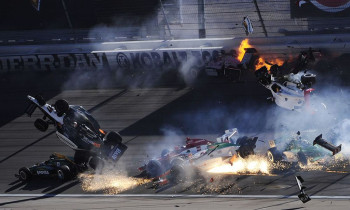
Car setup
In auto racing, racing tuning or tuning a car is a set of special adjustments made to the vehicle to optimize its behavior during the race (tuning performance, steering, reliability, etc.). Adjustments can also be made to the suspension, brakes, transmission, engine, tires, as well as many other parts and systems of the car.
Racing driver
Race car drivers in the strongest and most famous championships in the world are usually paid by the teams they are performing for or their personal / team sponsors, so drivers have significantly higher earnings. Contrary to what can be assumed in most cases, racing drivers often do not have the required excellent reflexes. They usually require precision in running and good tracking of the race.
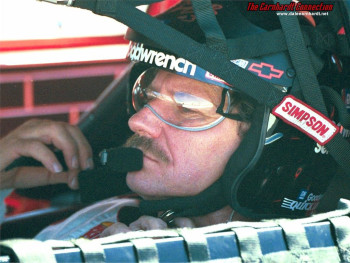
The physical preparation required for auto racing drivers varies due to the handling of different types of cars, but for open-wheeled cars where the thrust force and G-force in the curves are extremely high, the physical force required to drive such a car must also be very significant. In addition, the race can take several hours, so the heart rate of the driver is often above 140 beats per minute, so riders need to be extremely healthy and strong. For driving standard city cars, going to the gym is not nearly as much of a problem if you want to be physically and mentally healthy to drive.
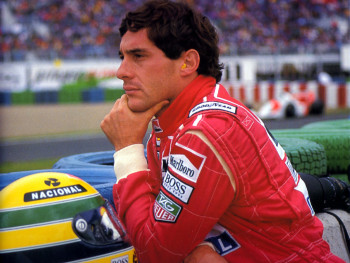
Retrieved from: www.netauto.rs
Recommendation of similar texts:

Hi there, I am Mladen and I am an auto enthusiast. I started this blog years ago to help like minded people share information about latest cars, car servicing ideas, used car info, exotic cars, and auto technology. You will find helpful articles and videos on a wide variety of cars - Audi, Mercedes, Toyota, Porsche, Volvo, BMW and much more. Ping us if you have anything cool to share on latest cars or on how to make older cars more efficient, or just want to say hi!

